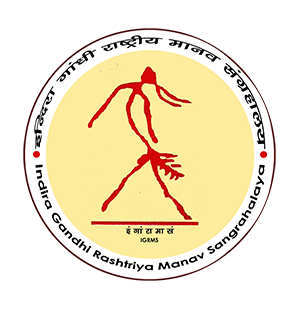कुम्हारपारा -Kumharpara
प्रदर्शनी की अवधारणा
कुम्हारपारा मुक्ताकाश प्रदर्शनी भारत के कुम्हार समुदायों को समर्पित है। यह कुम्हारी परंपराओं का एक संक्षिप्त नृवंशविज्ञान विवरण देने और रचनात्मकता के उनके सरल कार्यों को प्रस्तुत करने का प्रयास करता है। प्रदर्शनी की परिकल्पना समुदायों को अपनी संस्कृति को व्यक्त करने और स्वदेशी ज्ञान की विरासत को जन-जन तक पहुंचाने के लिए एक स्थान प्रदान करने के लिए की गई थी। इसका उद्देश्य संग्रहालय के आगंतुकों के लिए संग्रहालय कार्यशालाओं के विभिन्न अंतरालों पर कुम्हारों के साथ बातचीत करने के अवसर प्रदान करना और उस अवधि के दौरान जब संग्रहालय में वार्षिक नवीनीकरण कार्यों के लिए कुम्हार उपलब्ध हैं।
संग्रहालय द्वारा परिसर में आयोजित कार्यशालाओं के माध्यम से प्रदर्शन पर प्रदर्शनियों को एकत्र किया जाता है। प्रदर्शनी 7 मार्च 2018 को जनता के लिए खोली गई थी और वर्तमान में, यह देश के विभिन्न हिस्सों से आने वाली 12 प्रदर्शनियों को प्रदर्शित करती है।
CONCEPT OF THE EXHIBITION
The Kumharpara Open Air Exhibition is dedicated to the Potter communities of India. It endeavors to give a brief ethnographic account of the Pottery traditions and present their ingenious works of creativity. The exhibition was conceptualised to provide a space for the communities to express their culture and dessiminate legacies of indigenous wisdom to the masses. It also aims to provide opportunities for museum visitors to interact with the potters at different intervals of museum workshops and during the period of when potters are available in the museum for annual renovation works.
Exhibits on display are collected by the museum through workshops organized in the campus. The exhibition was opened to the public on 7th March 2018 and presently, it displays 12 exhibits coming from different parts of the country.
परिचय
कुम्हारी कला का आविष्कार इतिहास में धरती पर मानव अवतरण के बाद की ही क्रांति है इसे क्षेत्रीय एवं सांस्कृतिक कला के सबसे मूर्त एवं सांकेतिक तत्वों में से एक माना गया है। इस कला का जन्म सामान्यतः स्थाई जीवन के आरम्भ से ही माना गया है। कुम्हारी परंपरा को केवल प्राचीन संस्कृतियों की अवधि जानने के लिए ही नहीं अपितु उनका तादात्मय स्थापित करने के उद्देश्य से भी महत्वपूर्ण रूप में स्वीकारा गया है। अतः युगों से ही कुम्हारी कला का अध्ययन प्राचीन संस्कृतियों को पहचानने, उन्हें समझने एवं उनकी विशेषताओं को उजागर करने के लिए अति आवश्यक माना गया है। भारतीय उपमहाद्वीप में मृदभांड निर्माण के साक्ष्य लगभग 8000 ईसा पूर्व मेहरगढ़ (नव पाषाण युगीन) में देखे गए। बघाईखोर (उत्तर प्रदेश के मिर्जापुर जिले) एवं लंघनाज (गुजरात के मेहराना जिले) की सूचना अनुसार विंध्य क्षेत्र में मध्य पाषण युगीन सिरेमिक के अंश एवं छोटे टुकड़े पाए गए जो पूर्णतः हस्त निर्मित मृद भांडो के साक्ष्य हैं। इसके अतिरिक्त (नव पाषण से मध्यकालीन युग तक) विभिन्न सांस्कृतिक स्तरों पर पुरातात्विक स्थलों से खुदाई के दौरान भी मृदभांड प्राप्त हुए।
मृदभांड बनाने की परम्पराएं भारत में आज भी जारी हैं। विभिन्न क्षेत्रों के कुम्हार उनके पूर्वजों द्वारा प्रदान किये गए पीढ़ीगत हस्तांतरित कौशल का प्रयोग इस दिशा में कर रहे हैं। पिछले कई दशकों में नृजातीय एवं मानव पुरातात्विक अनुसंधान देश के कई हिस्सों में किये गए हैं। इन अध्ययनों में शोधकर्ता इतिहास से वर्तमान तक इस तकनीक में आये परिवर्तनों को जानने का प्रयास कर रहे हैं। यह भी अवलोकन में पाया गया है कि परंपरागत टैक्नोलोजी जैसे मिटटी को हाथ से आकार देना, चाक द्वारा तैयार करना, पुराने पात्र को नवाकर देना एवं हस्त प्रतिरूपण के कई तरीकों जैसे कॉइल्ड मैथड (कुण्डलिनी विधि), स्लैब पैटर्न एवं चाक तथा हाथ का मिश्रित रूप आज भी भारत के कई स्थानों विशेषतः ग्रामीण क्षेत्रों में जहाँ मांग तुलनात्मक रूप से पहले की तरह ही है, उपयोग में लाये जा रहे हैं।
यह मुक्ताकाश प्रदर्शनी पूर्णतः इं.गाँ.रा.मा.सं द्वारा पिछले दस वर्षो में आयोजित कुम्हारी एवं टेराकोटा कार्यशालाओं का ही निचोड़ हैं। भारत के कई स्थानों से कुम्हारों को विभिन्न पड़ावों में आमंत्रित किया गया जिन्होंने अपने कुम्हारी कौशल के प्रदर्शन के साथ पारंपरिक मृदभांड एवं टेराकोटा आकृतियाँ जो अब मुक्ताकाश प्रदर्शनी “कुम्हार पारा“ में शोभा पा रहे हैं, का निर्माण भी किया।
प्रस्तुत प्रदर्शनी भारत के विभिन्न क्षेत्रों विशेषतः असम, गुजरात, लद्दाख, जम्मू-कश्मीर, मणिपुर, ओडिशा, तमिलनाडु एवं पश्चिम बंगाल की कुम्हारी परम्पराओं को मानव शास्त्रीय सन्दर्भों रूप में प्रस्तुत करने का प्रयास करती है। ये समुदाय, कुम्हारी कला में लगे लोगों की जनसँख्या, उनसे जुड़े सामाजिक – आर्थिक पहलुओं, पारंपरिक ज्ञान पद्दति का हस्तांतरण, मान्यताएं, अनुष्ठान, उत्पादन की तकनीक एवं परम्पराओं की अविरलता में इनके उपयोग को अभिव्यक्त करती है।
Introduction
The invention of pottery is the next revolution in history after man’s appearance on earth. It is considered one of the most tangible and iconic elements of regional and cultural art. The occurrence of pottery is generally attributed to the beginning of settled life. It is considered to be an important index not only to date the ancient cultures but also to identify them. Therefore, the study of pottery through the ages is considered to be an essential requirement to identify, understand and characterise the ancient civilizations. Early evidence of pottery making is noticed in the Indian Subcontinent at Mehrgarh (Neolithic) nearly 8,000 BCE. While culturally, the Vindhyan region has yielded the ceramic remains of the Mesolithic period reported from BaghaiKhor (Dt. Mirzapur, U.P) and Langhnaj (Dt. Mahesana, Gujarat), small bits and pieces being found which are evidence of entirely handmade pottery. Besides this, pottery has been excavated from various archaeological sites from different cultural levels (Neolithic to medieval period).
The pottery-making tradition is still continuing in India. The potters of different areas are practicing the inherited skills of their ancestors. In the last three decades, ethnographical and ethno-archaeological research has been conducted in various parts of the country. In these studies, the researchers are trying to identify the technological changes from past to present times. It is also noticed that the traditional techniques like hand beaten, wheel thrown, moulding over an old pot and many ways of hand modeling like coiled method, slab pattern, and a combination of both wheel-turned and hand-beaten, still survive in some of the parts, particularly in rural areas where demand is almost same as compared to the past.
This open-air exhibition is entirely an outcome of the past years of pottery and terracotta workshops organized by IGRMS. In different phases, potters from different parts of India were invited to IGRMS and asked to present their skills and make traditional pottery and terracotta, which are now part of an open-air exhibition “Kumhar Para” (potters’ village). Data is collected from primary sources through direct interviews of potters and audio-visual documentation of pottery-making processes.
The present Exhibition endeavours to present a brief ethnographic account of pottery traditions of different parts of India, specifically Assam, Gujarat, Ladakh, Jammu & Kashmir, Manipur, Odisha, Tamil Nadu, and West Bengal. It explains about the community, i.e., the population of people involved in pottery; their associated socio-economic facets, transfer of the traditional knowledge system, beliefs, rituals and technique of production, and their consumption in terms of a continuing tradition.

- गोडारी पठेरा-GODARI PATHERA
- कुम्हई शक्ताक फूरोन-KUMHEI SHAKTAK PHURON
- मणिपुर की लोंगपी पॉटरी-LONGPI POTTERY OF MANIPUR
- मणिपुर का कुम्हारी बाजार- CHAPHU KEITHEL OF MANIPUR
- कच्छ की खावडा कुम्भ्कारी-KHAVDA POTTERY OF KUTCH
- तमिलनाडु के कुंभकारी एवं टेराकोटा परंपरा-POTTERY AND TERRACOTTA TRADITION OF TAMIL NADU
- ओडिशा की कुम्हारी एवं टेराकोटा परंपरा -POTTERY AND TERRACOTTA TRADITION OF ODISHA
- पश्चिम बंगाल की कुम्हारी एवं टेराकोटा परंपरा-POTTERY AND TERRACOTTA TRADITION OF WEST BENGAL
- लिकिर की कुम्हारी परंपरा -POTTERY TRADITION OF LIKIR
- मालन गुजरी -MALAN GUJRI (Kuberi Puja)
- राजस्थान पोखरण की कुम्हारी परंपराएं-POTTERY TRADITIONS OF POKHRAN (RAJASTHAN)
- गोलाघाट की कुम्भ्कारी परंपरा-POTTERY TRADITION FROM GOLAGHAT
- पेघाली-PEGHALI (Traditional Kilns For Firing Pots)
- अंजी पाफल –ANJI PAPHAL



